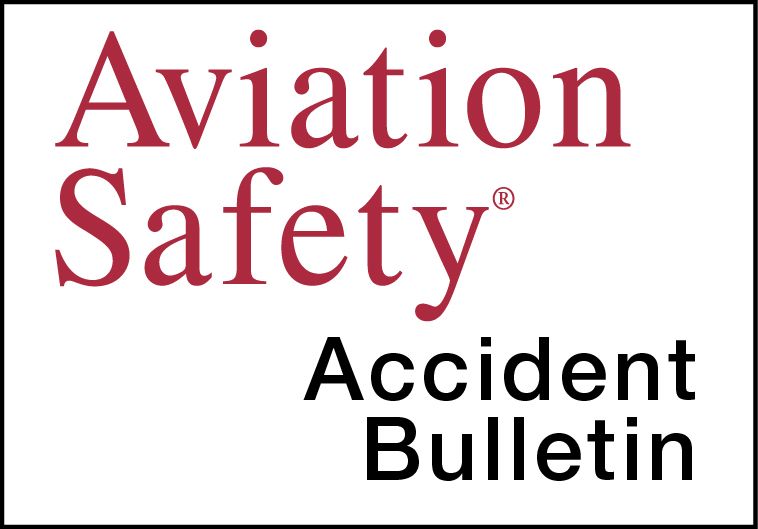AVweb’s General Aviation Accident Bulletin is taken from the pages of our sister publication, Aviation Safety magazine. All the reports listed here are preliminary and include only initial factual findings about crashes. You can learn more about the final probable cause on the NTSB’s website at www.ntsb.gov. Final reports appear about a year after the accident, although some take longer. Find out more about Aviation Safety at www.aviationsafetymagazine.com.
July 1, 2019, Fort Smith, Ark.
Beechcraft A23 Musketeer
At about 1155 Central time, the airplane experienced a hard landing on a road following a loss of engine power. The flight instructor and passenger were not injured. The airplane sustained substantial damage. Visual conditions prevailed for the demonstration flight for a prospective student.
While returning to the airport from the practice area, the instructor switched fuel tanks, activating the fuel pump per standard procedures. Shortly after he turned off the fuel pump, the engine “started coughing” and subsequently lost power completely. His efforts to restore engine power were not successful and he set up for a forced landing to a roadway. The airplane touched down hard, collapsing the nose and right main landing gears.
July 2, 2019, Sevierville, Tenn.
Luscombe 8E Silvaire
The airplane was substantially damaged at about 0930 Eastern time while landing. The private pilot and passenger were not injured. Visual conditions prevailed.
The pilot purchased the airplane the day prior to the accident. He departed the airport and performed maneuvers in the local area, then returned and completed four normal wheel landings. On the fifth landing, at about 30 mph, the tailwheel settled to the runway. When the tailwheel touched down, the pilot stated he felt a rumble “like a machine gun” and the airplane veered to the right. He applied left rudder, and the airplane subsequently veered left off the runway, the right main landing gear collapsed and the right wing spar sustained substantial damage when it impacted terrain. Examination revealed the tailwheel was cocked to the right, perpendicular to the fuselage.
July 3, 2019, Haverhill, Mass.
Pipistrel Sinus Motorglider
At about 2000 Eastern time, the motorglider was substantially damaged during a forced landing. The solo private pilot/owner was not injured. Visual conditions prevailed.
The pilot reported flying at 3500 feet MSL to his usual soaring location before turning off the engine. He soared for a few minutes looking for thermals, but found none and decided to head back to the departure airport while descending through 2500 feet. Although the engine restarted, it seemed “sluggish” and the pilot was not able to obtain normal performance from it, even after troubleshooting. About 1½ miles from the approach end of the desired runway, the motorglider struck a fence on a hilltop at an elevation of about 300 feet MSL and skidded to a stop, sustaining damage to its landing gear, lower fuselage and left wing.
July 5, 2019, Chebanse, Ill.
Beechcraft A36 Bonanza
The airplane was substantially damaged at about 1358 Central time during a forced landing following an in-flight loss of engine power. The pilot sustained serious injuries, one passenger sustained minor injuries and second passenger was fatally injured. Visual conditions prevailed.
The pilot subsequently reported that while in cruise flight at about 3000 feet MSL, the engine quit. His attempts to restore engine power were not successful and he executed a forced landing to a wheat field. The airplane came to rest upright on a southeast heading at the end of a 75-foot-long debris path; depressions consistent with impact from the main landing gear were about 50 feet from the airplane. The left wing tip fuel tank was compromised but did not exhibit any fire damage. The wheat field was burned in an area about 35 feet behind the left wing. The right wing tip fuel tank was compromised and exhibited fire damage, with the wheat field burned over an area extending about 20 feet behind the right wing tip.
July 6, 2019, Oxford, Miss.
Cessna 172R Skyhawk
At about 1515 Central time, the airplane impacted a golf course. The student pilot sustained serious injuries that subsequently became fatal. The airplane, which was operated by the Civil Air Patrol, was substantially damaged during the impact and subsequent fire. Visual conditions prevailed.
Witnesses heard the pilot transmitting on the CTAF, which they described as “panicked.” Another witness saw the airplane approach Runway 9, which featured a tailwind, but not touch down. Abeam the windsock near midfield, the airplane started to climb at a “steep” angle and headed toward the golf course. The witness then observed the airplane “go straight down behind the trees.”
Another witness reported the airplane appeared to be “struggling” to maintain airspeed, was nose-up and appeared to be very close to stalling. The witness indicated that the airplane then made a left turn and lost altitude, struck the ground and slid into nearby trees. Observed weather at 1515 included wind from 310 degrees at 11 knots, visibility of nine statute miles, few clouds at 3400 feet AGL and scattered clouds at 4100 feet.
This article originally appeared in the October 2019 issue of Aviation Safety magazine.
For more great content like this, subscribe to Aviation Safety!



































